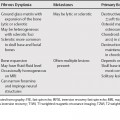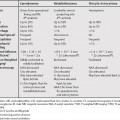100 A stratified pattern of enhancement in the bowel wall is seen when inner and outer layers of high attenuation surround a central submucosal area of low attenuation. If the submucosal low density is fat attenuation, this is referred to as the fat halo sign. If the submucosal low density is higher than fat density, this can be referred to as the target sign. This is a nonspecific finding that usually indicates inflammation or ischemia. Conditions in which it has been noted include inflammatory bowel disease, infectious enterocolitis, ischemia, radiation enteritis, intramural hemorrhage, and bowel edema in cirrhotic patients.1,2 The primary value of this finding is that it usually indicates a nonneoplastic etiology for bowel wall thickening, although rarely an infiltrating scirrhous carcinoma can have this appearance.1 Submucosal fat deposition in the bowel wall has been called the fat halo sign.3 This manifests as a three-layered target sign in the bowel wall with fat density in the middle layer. The fat can usually be distinguished from edema by a lower attenuation, but it is of higher attenuation than mesenteric fat. The fat halo sign usually indicates a chronic process, most likely chronic inflammatory bowel disease.4
Imaging Signs of the Bowel
Target Sign
Fat Halo Sign
![]()
Stay updated, free articles. Join our Telegram channel

Full access? Get Clinical Tree





